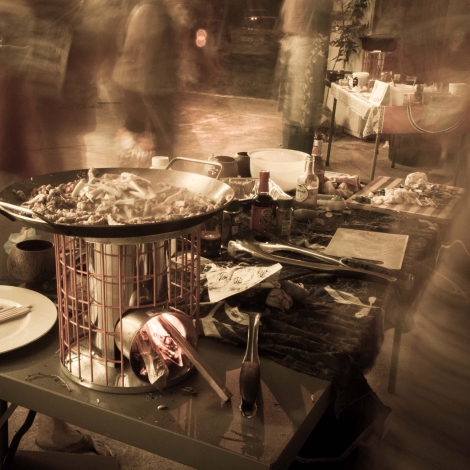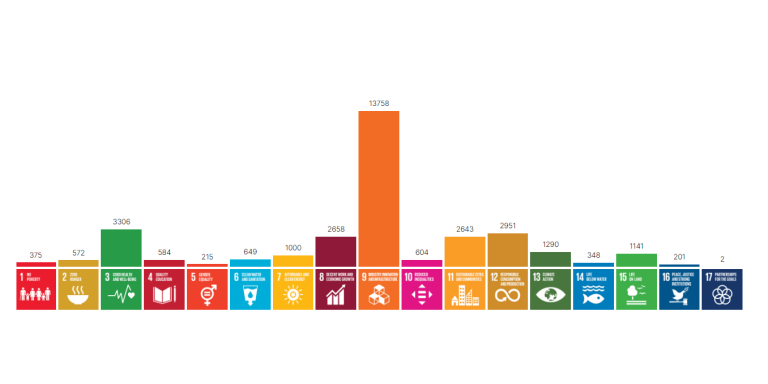Diversity in clean cookstove design has climbed sharply as startups, mom and pops, multinationals and even students try to solve a humanitarian conundrum. They are also taking a shot at a pot of grant and investment money totaling hundreds of millions of US dollars. The Global Alliance for Clean Cookstoves’ Clean Cooking Catalog lists 394 products, and makes no claim to comprehensiveness.
Having choices among different products may be welcome, as few people believe that one stove can work in every context. Stoves optimized for burning dried dung might make sense in communities that herd cattle and buffalo, for example, and LPG burners can succeed where supply chains are reliable and cheaper fuels are unavailable. But the range of functionality, fuel types and price points can be bewildering. And so can doubts about a stove’s quality.
“People have the impression that standards are set in stone and unchanging. We often need to think of standards as more of an iterative process,” – Ranyee Chiang, Chair of ISO Technical Committee 285
To allay concerns, in 2012 an international community of experts agreed on a set of criteria by which to measure a stove’s performance. The International Workshop Agreement (IWA 10) was approved at The Hague, Netherlands, in a meeting organized by the Global Alliance and the Partnership for Clean Indoor Air (PCIA). IWA rates stoves on a five-tier scale for four categories of performance: fuel efficiency, total emissions, indoor emissions and safety. The agreement serves in the interim as the International Standards Organization develops standards to govern this technology.
The ISO designated Technical Committee 285 to create the standards. TC 285 is as diverse in membership as the stove designs that it is assigned to standardize. The committee includes experts from 44 countries and eight international organizations. And they accept applications for new members to participate.
The work to standardize this field has high stakes. As many as 3 billion people cook over open fires and solid-fuel-burning stoves that can smoke, threatening respiratory illness, deforestation and the production of greenhouse gases. The World Health Organization estimates that household air pollution, including smoky kitchens, may cause more than 4 million deaths per year. Women in developing countries may be particularly at risk, as indoor air pollution may be their leading cause of non-communicable disease.
“The best practice with standards is to have performance-based standards” – Ranyee Chiang
At this stage, the public face of the standards development process looks like a disparate list of document titles.
“It’s pretty typical to have various documents at different stages of development within an ISO committee,” says Ranyee Chiang, Chair of TC 285 who was formerly with the Global Alliance.
The committee publishes updates on its progress at ISO’s site here: ISO/TC 285 Clean Cookstoves and Clean Cooking Solutions, and the Global Alliance publishes updates on standards documents here: Open Ballots for ISO Standards Documents. The committee published a business plan to serve as an overview of the work they have undertaken.
But details about the documents’ contents are not publicly available.
“Before ISO documents are published, they are not made available to media. The experts that countries nominate to join the Working Groups contribute to and review the document. And at certain balloting stages, country committees review the document as well,” Ms. Chiang says.
We asked Ms. Chiang a few questions for a look at what is going on in the committee.
E4C: What are some of the critical standards that are under review?
RC: The question of which standards documents are most critical is difficult to answer, because they are designed to work together. Laboratory and field testing standards offer different benefits and are meant to be used together. The terms and definitions, while they don’t include specific methods, make sure that people are using terminology consistently. Social impacts is a critical consideration, they build on the laboratory and field testing methods which focus more on quantifiable technology performance measures.
The laboratory and field testing standards documents include performance metrics that the stakeholders identified as being most critical. They basically cover efficiency, emissions (across a few different types of emissions), safety, and durability.
E4C: What are some of the challenges in developing these standards? What, for example, has proven to be more complicated than it might seem at first glance from a layman?
RC: A general challenge with developing standards is that people have the impression that standards are set in stone and unchanging. With that misunderstanding, often people want more data or certainty than is currently available and are hesitant to publish documents without more data. But often, that additional data comes through the publication and use of standards. We often need to think of standards as more of an iterative process. Publishing standards allows us to gather more data about the methods and uncertainties, which can then be used to update the standards. Thankfully, the ISO process is designed to be iterative.
E4C: Along those lines, what are some of the controversies that have begun as different groups have tried to develop standards?
RC: This is a question that I can’t answer, since the Working Group experts have the expectation that their discussions on the standards are not shared with the media.
E4C: Is there an impact or effect of publishing cookstove standards that might not be apparent or intuitive at first look? For example might the published standards tend to favor the use of certain fuels or certain stove materials?
RC: The best practice with standards is to have performance-based standards. So rather than saying a certain fuel, technology, or material category is better than another, the standards talk about meeting specific emissions, efficiency, safety, or durability goals. There are also tiered goals, so that everyone can identify where they are now and work to improve. Then it is up to the fuel or technology designer or manufacturer to find a way to achieve those goals. I think the non-intuitive impact of standards is that it is meant to provide a framework for people to set different goals. Rather than say there is one bar that everyone should meet, standards allow us to be rigorous while also providing flexibility for people to customize goals that meet their priorities, and to allow improvement across all types of technologies and fuels.
The impact on forests, health, or climate depends on a number of factors, including technology performance and the scale of adoption. Because the standards focus on technology performance, they are only one part of the equation for the overall impacts. There is a paper that we published a few years ago exploring this issue [Quantitative Guidance for Stove Usage and Performance to Achieve Health and Environmental Targets – Environmental Health Perspectives]. I also know that the Alliance has some research and estimates that combine technology performance and adoption to estimate impacts.

